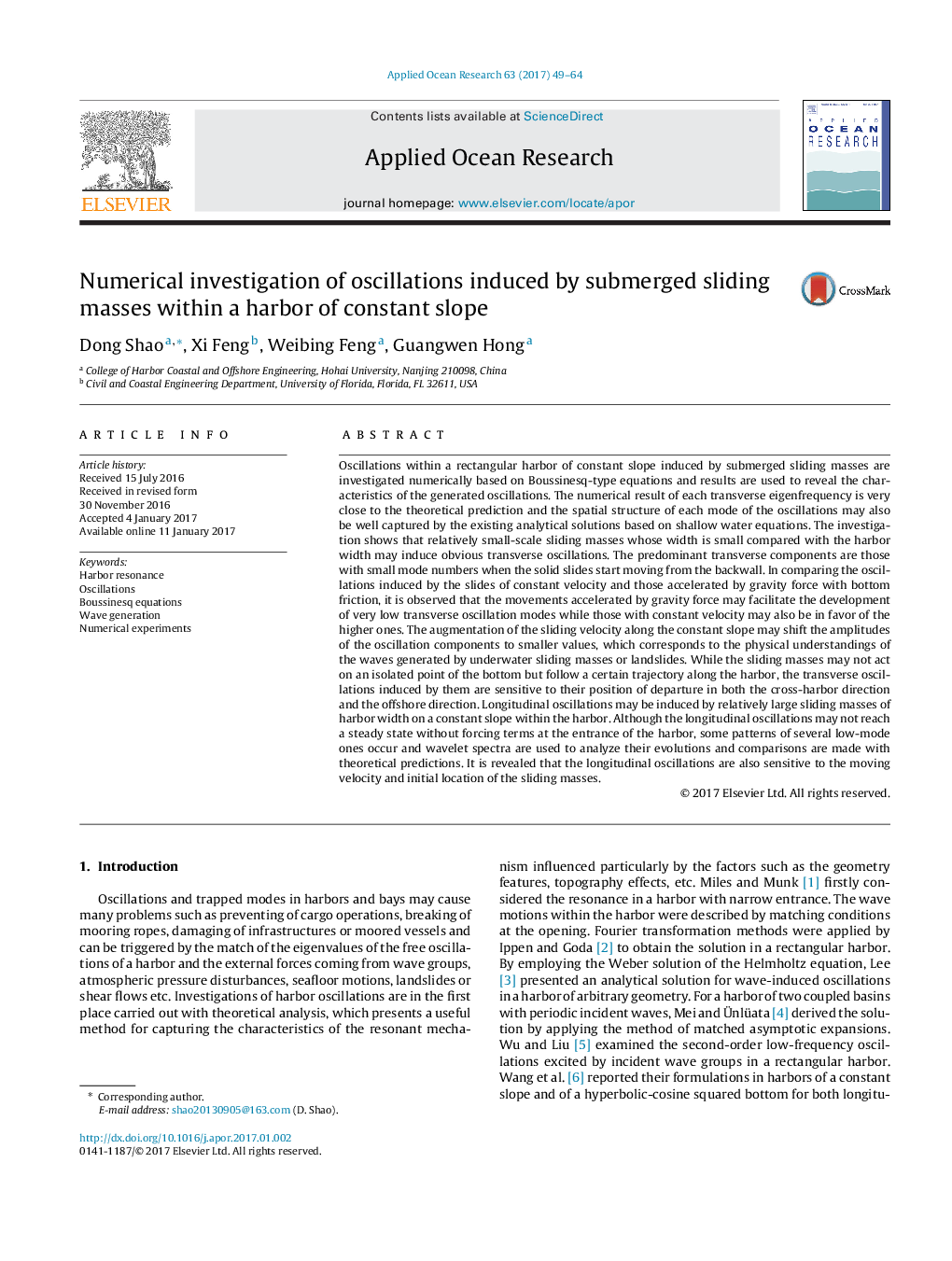| Article ID | Journal | Published Year | Pages | File Type |
|---|---|---|---|---|
| 5473205 | Applied Ocean Research | 2017 | 16 Pages |
Abstract
Oscillations within a rectangular harbor of constant slope induced by submerged sliding masses are investigated numerically based on Boussinesq-type equations and results are used to reveal the characteristics of the generated oscillations. The numerical result of each transverse eigenfrequency is very close to the theoretical prediction and the spatial structure of each mode of the oscillations may also be well captured by the existing analytical solutions based on shallow water equations. The investigation shows that relatively small-scale sliding masses whose width is small compared with the harbor width may induce obvious transverse oscillations. The predominant transverse components are those with small mode numbers when the solid slides start moving from the backwall. In comparing the oscillations induced by the slides of constant velocity and those accelerated by gravity force with bottom friction, it is observed that the movements accelerated by gravity force may facilitate the development of very low transverse oscillation modes while those with constant velocity may also be in favor of the higher ones. The augmentation of the sliding velocity along the constant slope may shift the amplitudes of the oscillation components to smaller values, which corresponds to the physical understandings of the waves generated by underwater sliding masses or landslides. While the sliding masses may not act on an isolated point of the bottom but follow a certain trajectory along the harbor, the transverse oscillations induced by them are sensitive to their position of departure in both the cross-harbor direction and the offshore direction. Longitudinal oscillations may be induced by relatively large sliding masses of harbor width on a constant slope within the harbor. Although the longitudinal oscillations may not reach a steady state without forcing terms at the entrance of the harbor, some patterns of several low-mode ones occur and wavelet spectra are used to analyze their evolutions and comparisons are made with theoretical predictions. It is revealed that the longitudinal oscillations are also sensitive to the moving velocity and initial location of the sliding masses.
Related Topics
Physical Sciences and Engineering
Engineering
Ocean Engineering
Authors
Dong Shao, Xi Feng, Weibing Feng, Guangwen Hong,
